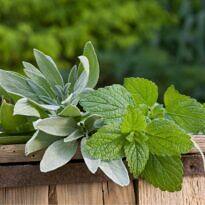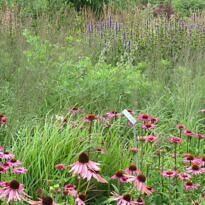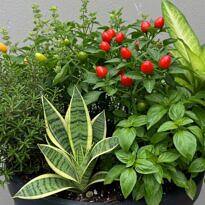Having beautiful tropical plants indoors, just like our grandmothers used to have, might seem like an easy challenge to conquer. All it takes is watering the plants with care, placing them in a well-lit spot, and enjoying the view. However, having a thriving Urban Jungle entails more than just the basics. Watering and light are merely the starting points, and without the right care as outlined in this article, your urban forest might wither away without apparent reason. Leaves could be yellow, with burnt edges, pests might take over, and before you know it, your plants are beyond revival. But this doesn’t mean you’re cursed with a “black thumb.”

Caring for houseplants demands more than just watering. However, it’s not overly complex, technologically demanding, or expensive. It’s a simple, essential, and effective process. The result: lush, green plants that flourish and multiply within your home. The strategies I’m about to share are particularly effective in early spring, but you can apply them at other times too. Just be sure to consider your plant’s current state.
Spring Care for Houseplants
1. Repotting:

The primary and most important spring task is repotting. I prefer to do all the repotting at once, assessing each plant thoroughly before the process. Remember, repotting stresses plants, disrupting their roots and fine capillary roots. Thus, evaluation is crucial. Houseplants typically need repotting every one or two years, but consider the substrate and root condition, primarily.
Over time, the once-loose, fertile substrate can become compacted, poor, and laden with fertilizer salts and water residue, eventually turning acidic and saline. Air spaces within the roots diminish, often suffocating them. Compaction further reduces drainage capacity, resulting in unhealthy conditions that impede root respiration, causing plants to wilt. Stagnant water exacerbates the situation, promoting fungal and bacterial diseases. Consequently, the majority of indoor plant species require repotting annually or biennially.
Fresh, nutrient-rich, loose substrate revitalizes plants. However, this replacement should occur during the plant’s vegetative growth phase. Repotting during colder periods is unwise, as the plant is resting and will take longer to establish roots. Spring and summer are preferable for repotting.
2. Flushing:

This unusual term refers to a more thorough substrate cleanse. Flushing extends the substrate’s lifespan, postponing the need for repotting. It improves the substrate’s chemical properties while maintaining its physical characteristics. Flushing won’t help if the substrate is compacted and hard. If it’s still permeable and well-draining, this special wash will remove accumulated fertilizer residue and salts, benefiting your plants.
For flushing, place your plants in a tank or sink, adding 3 to 4 times the volume of water as the pot’s size. Gradually add water to avoid overflow, ensuring full drainage before adding more water. After the water is added, allow thorough drainage before returning the plant to its location. Don’t worry, as long as you remove excess water, your plant won’t drown. Many plants thrive and start sprouting quickly after flushing. Apply this technique to non-repotted plants. Repeat every month for tray-containing plants or every 3 months for freely-draining plants, significantly extending substrate lifespan.
3. Fertilization:

After a prolonged vegetative rest, houseplants are ready to grow and produce new leaves in spring. It’s the perfect time to reintroduce a comprehensive and balanced fertilization regimen, especially if you’ve done the flushing technique described earlier. If you’ve repotted, waiting a month before fertilizing makes sense as the plants establish roots and the new substrate contains nutrients. Opt for quality Super Premium fertilizers, avoiding common garden fertilizers that are too strong and quickly salt the substrate. Urban Jungle plants have different nutritional needs than garden plants. They grow slower and aren’t exposed to full sunlight, requiring light and consistent fertilization.
Many species, like Anthuriums, Monsteras, and Alocasias, crave calcium, often lacking in conventional fertilizers that usually only contain NPK (Nitrogen, Phosphorus, and Potassium). While these nutrients are vital, such fertilizers often lack other macronutrients like sulfur and magnesium, let alone micronutrients. Therefore, check fertilizer labels for complete formulations containing macro and micronutrients. Even in complete fertilizers, calcium is often missing due to its reactions with other elements, rendering it unavailable for plants. In this case, supplement calcium using preferably liquid, chelated sources.
4. Grooming:

When you see Instagram feeds or Pinterest images with jaw-dropping plant-filled spaces, showcasing only green leaves without any yellow or dried ones, you can be sure of one thing: these plants have undergone grooming. Grooming involves removing yellow, brown, dried, and damaged leaves, as well as cataphylls and dry flowers.
Contrary to masking plant issues, grooming isn’t a “make up” for sickly plants. It’s normal for old leaves to yellow and fall, and grooming maintains plant health and ventilation. Alongside removing unsightly leaves, grooming involves washing the leaves. Indoor plants lack the rain-washing benefit of outdoor plants, accumulating dust on their surfaces and requiring a deeper cleanse to avoid hindering photosynthesis and transpiration, impacting their beauty and growth.
If you have an outdoor area, take your indoor plants outside on a cloudy day and give them a hose bath. In apartments, the shower works well. Place plants in the shower and rinse them with cold water, ensuring clean, dust-free leaves.
5. Pest Control:

During colder winter months, pests tend to slow down along with plant growth, reducing their population. As warmth returns in spring, pests resurge vigorously. Hence, early spring is prime time for effective pest control. Armed with a magnifying glass, meticulously examine leaves, especially new growth and the undersides. Look for aphids, fungus gnats, mites, and mealybugs. Eradicate snails and slugs on sight. Address each pest you find—sometimes simple cleaning suffices, while other cases might require treatment. Each pest demands specific management.
Indoors, opt for natural, non-toxic products safe for humans and pets. Avoid overusing pesticides. Early spring pest control is easier and faster than combating full-blown infestations during peak summer. Prevent now, and avoid major issues later. Keep a vigilant eye on your plants.






